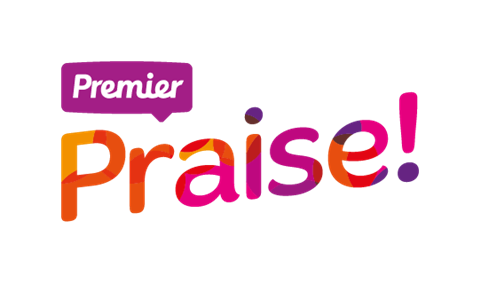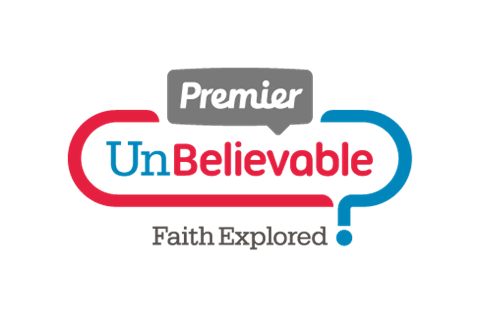
Doing children’s ministry is a lifelong journey. We are constantly learning, about our faith, about our practice, about ourselves and about god. We can’t know everything, and similarly we can’t be good at everything.
Look at the team members who volunteer with you in your church. What are they good at? What are you good at? Everyone will have their own skills and gifts; that’s what makes you a team. There will be people who are good at leading singing, at leading a discussion, at chatting with children informally, at creating great craft activities and at coming up with games. If you haven’t helped people get to know their gifts and strengths, then set aside some time to do so. You might unearth some amazing new talents as your fellow leaders talk about their loves, hopes, dreams and passions.
Now and again, there’ll be a gap in your team’s skills and abilities. There might be a lot of enthusiasm to try something out, but you might lack the inspiration and knowledge. And that’s where a good resource comes in. There are several resources on the market designed to be used in a Sunday schools, junior churches or whatever the name of your group is. They are written from slightly different viewpoints, but all strive to help you introduce children to Jesus.
The question is: which one to choose? Here, we’ve looked at five different areas where you might lack a bit of expertise in your team and highlighted which resources would be the best ones to choose if you’re missing that knowledge.
STORYTELLING AND BIBLE ENGAGEMENT
Children’s work can sometimes feel a bit like being a performer, and that is most true when it comes to storytelling. Telling a good story requires confidence, creativity and communication skills, and it can be difficult to get all those features in a children’s work team at the same time. More than that, a story should lead a child to engage with God through the Bible, rather than just being a fun story to listen to.
Light (from Scripture Union) gives good guidance in storytelling and Bible engagement. For each session, the resource provides two different storytelling activities to help children get into the Bible. Both activities place the session’s story into the wider story of the Bible, and provide all the information (and a script) that you might need to tell the story. The story activities cover a variety of learning styles, exploring the Bible through methods such as drama, sound effects and pictures
Energize (from Urban Saints) also provides different ways to engage with the Bible and also uses a variety of ways to do that. Sometimes Energize sessions focus on more than one Bible passage and so, in these cases, you get only one option per passage. Nevertheless, the storytelling is engaging and inclusive.
Godly Play is worth a mention here too. The style of storytelling in this method of children’s work is the same every time, so you don’t get the variety offered by other resources, but scripts and instructions are provided. Moreover, these scripts are tried and tested, so you can use them with a degree of confidence. They are proven to engage children with the Bible and with God. Even if you don’t buy into the whole Godly Play experience, you can still use the resource to help you in your own storytelling.
ASKING QUESTIONS AND LEADING A DISCUSSION We’ve all been part of small groups where the leader asks questions and no one answers. An awkward silence settles over the group as people grow more and more uncomfortable. I think we’ve all been that leader, desperate for someone to say something… anything! It’s tempting in these situations to fill the gaping void with our own words, but it could be that we’re asking the wrong questions!
If you’re looking for some guidance on questions to ask in a circle time context, Click (from the Good Book Company) is helpful. There is a section called ‘Chat time’ which provides sample questions to help you lead a discussion about life in general and experiences linked to the theme of the session. Whereas their Bible engagement questions are quite proscriptive, the ‘Chat time’ suggestions are very useful for someone who is uncertain about leading a general discussion like this.
Godly Play provides story-related questions which are very open and help children to start theologising for themselves. There are no right or wrong answers in Godly Play, and so children are free to wonder and debate between themselves, without the fear of being ‘wrong’. This can be liberating for children, but terrifying for leaders. However, in the ‘How to’ Godly Play book (volume one), it outlines how you can manage such a free discussion.
Energize has sets of questions to help you as you lead children through a Bible engagement activity. This gives you questions to ask about the passage, to help children start to interpret what they have encountered. Then there are questions to ask as children focus on what this might mean in practice for them. Light also gives you these same kind of questions.
RESPONSE AND PRAYER
Giving children a chance to respond to what they have learned is an important element of your children’s work. It’s all too easy to explain everything to the children and leave them no space to discover things for themselves. Self-discovery is vital in faith development, so we shouldn’t ignore this aspect of our work. However, helping children to do this is not easy – maybe we ourselves have not been encouraged to respond in this way, so we struggle to help others do so. A good response time enables children to make sense (or at least start to make sense) of what God is saying to them. So which resource gives you guidance to do this?
When Godly Play is done fully, the response time gives children free reign to think through and respond to God in whichever way they like. You provide a range of art and craft materials, books, children’s Bibles, building blocks – anything that can be used to enable a child to process their thoughts. The aim is not for the children to complete a particular craft or picture, but for them to use their chosen activity to process what they have encountered through the Bible story. In this way, children are able to take a lead role in their own faith development, without having to rely exclusively on adults.
Light also has places for this to happen, often worked into the Bible engagement activities. There are opportunities for children to reflect and to work out what practical impact their discoveries might have in their lives.
Connected (from Harrogate New Life Church) certainly helps you to create a space for children to respond, and is most suitable for churches who might describe themselves as charismatic. Activities that prompt prayer and listening to God are especially strong, and the resource encourages you to be brave and patient in expecting God to work in the children. This sounds an obvious thing to put in a resource, but often in the busyness of running a session, we can hurry from one activity to another without giving the children space to breathe, pause and listen to God.
For a more traditional churchmanship, ROOTS provides some good prayer and response guidance, particularly in a liturgical setting, helping children to engage with the same way of prayer and response in a way that they are likely to see in their church service.
SPIRITUAL SPACE
Creating an environment in which children feel safe and secure as they explore their own spiritual life is an important thing to do and goes further than making children feel physically comfortable. We need to provide an atmosphere which is open and freeing, where children feel able to ask questions and trust us to give honest answers. Creating this takes time, as much relies on relationships (and if we’re on a rota, then this might take even longer). But do any of the resources on the market help you with this?
ROOTS provides some good ideas to set the scene in your meeting space. These ideas include props or room decorations that you can have ready for children to see, touch and interact with as they come into your session. Having an interesting and interactive space ready for the children when they arrive can lift expectations and make them more open to hearing something amazing!
A good resource comes in handy when there’s a gap in your team’s skillset.
Connected has a couple of activities as part of each session which help you to lead children through a spiritual reflection or a time of just listening to God. Such times are by their very nature quite flexible and open-ended, and therefore quite scary for leaders who aren’t used to taking part. Yet the resource takes you through these activities and gives you things to say, ask and do at different points in the activities.
GAMES AND CRAFT
Games and craft are often the mainstay of many a children’s session, but not everyone is good at leading such activities. Of course, if you’re not good games, or are all fingers and thumbs when it comes to craft, you don’t have to include them. However, many of the resources available provide excellent ideas to help you get started.
On the games front, Energize has a wealth of choice in each of its sessions. There are a range of games, all of which link to the theme of the session in one way or another. The ideas are varied and the instructions clear, so you can use these ideas with confidence as part of your session.
At the end of each session in Go Teach (Go Teach Publications), there are some inventive craft ideas which will help you tell the Bible story and get children thinking about what God might be saying to them through what they encounter in the Bible. Most of the resources available have good craft options, but it’s important that we as leaders don’t focus on the craft itself and lose sight of the value of doing craft: that it’s a way of helping children process their thoughts and giving everyone chance to talk and ask questions while hands are occupied with other things.
As you can see, resources are able to fill a gap in your own skills or the combined gifts of your team. Each one is written from a slightly different points of view, so choose the one that suits your church’s way of doing things and your own working practices. Or mix and match one with one another!
ON THE MARKET, YOU CAN FIND
Light (Scripture Union): scriptureunion.org.uk/light
Energize (Urban Saints): energize.uk.net
ROOTS (ROOTS for churches): rootsontheweb.com
Godly Play: godlyplay.uk Click (The Good Book Company): thegoodbook. co.uk/children/click/
Connected (Harrogate New Life Church): connectedhearts.co.uk
Go Teach (Go Teach Publications): goteach.org.uk
The Bible Curriculum/Carousel (The Bible Curriculum): thebiblecurriculum.com, carouselsunday.com




























